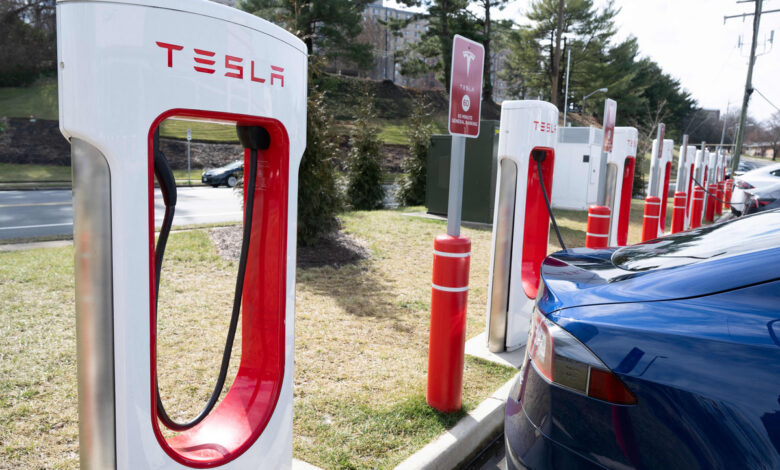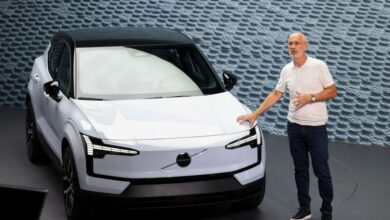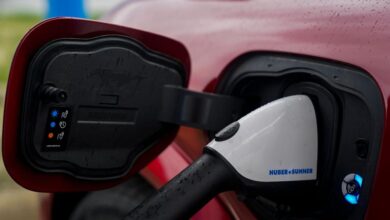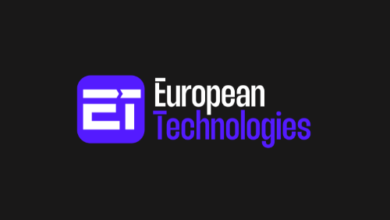Tesla layoffs shake confidence in the EV-charging future

For the last dozen years, as the prospects for America’s electric vehicles have veered between optimism and doom, industry insiders could always count on one rock-solid, reliable thing: Tesla’s charging network.
Late Monday, that all changed.
In a single stroke, CEO Elon Musk called his company’s vaunted charging reliability into question when he laid off most or all of Tesla’s Supercharger team, the people who made Tesla the envy of the EV industry. The network they built is bigger, faster, smarter and more reliable than any other company’s — and has become the linchpin of the auto industry’s plan to persuade millions of Americans to buy EVs and turn the tide on climate change.
“It feels like the rug just got pulled out from under a lot of the industry alignment that has been built in the last 12 months,” said Matt Teske, an industry veteran and CEO of Chargeway, an EV-charging software platform. “And leaves us on shaky ground.”
The abrupt decision left the ever-widening ecosystem of people who rely on Tesla — drivers, automakers, suppliers, electric utilities and policymakers — suddenly in the lurch, as emails to longtime Tesla contacts bounced and the most respected team in the industry all but ceased to exist.
This targeted layoff is Musk’s latest response to a sharp downturn in Tesla’s prospects as its cars become less popular. Last week, while reporting lower earnings, Musk said that the automaker would shed more than 10 percent of its global workforce of 140,000.
“We need to be absolutely hardcore about headcount and cost reduction,” Musk said in an email to Tesla staff on Monday, reported first by The Information. While past rounds of layoffs have been spread among divisions, this one lopped off hundreds of people on the EV charging team, including Rebecca Tinucci, the unit’s head.
Suddenly, a lot of things that seemed beyond question are being nervously asked.
“What’s the plan, what’s the strategy, and at such a pivotal moment, why are they bailing on that entire team?” asked Jonathan Katz, an EV-charging executive who was part of Tesla’s charging unit for five years ending in 2020.
Will Tesla drivers — and now other EV drivers — be able to continue to rely on the network that was one of the main perks about buying a Tesla? Will the automakers who bet their future EVs on Tesla’s charging stations and technology still have a reliable partner? Will Tesla be there to guide an industrywide transition to the technology that it invented? And will Tesla continue to participate in the federal build-out of charging stations — an effort that, until this week, it was leading?
Musk on Tuesday addressed the uncertainty in a post on X, the social media platform formerly known as Twitter and that Musk now owns, saying: “Tesla still plans to grow the Supercharger network, just at a slower pace for new locations and more focus on 100% uptime and expansion of existing locations.”
The news, while startling, struck some as a canny move — perhaps one that reflects the maturing EV sector, where more players are coming onto the scene and can take over the charging tasks that Tesla has, until now, managed mostly by itself.
Musk “clearly looked at what needs to be done to build out the Supercharging network, and it is probably a lot less than what it took to design and plan it,” said Karl Brauer, an auto analyst for the car-sales website iSeeCars.com.
However, some questioned how Tesla will carry out a slower expansion — or any operations at all — if the team behind it is no longer there. No one contacted for this story could name a single source in Tesla’s charging sector that still works there.
One of those trying to reach Tesla’s team Tuesday was Andres Pinter, the co-CEO of Bullet EV Charging Solutions, a company that provides electricians and other workers to build charging stations. Tesla Supercharger stations account for a quarter of its work.
The company’s chief operating officer, Mark Vogel, “was driving to a job in Dallas this morning when he received a call from our Tesla construction lead saying that his entire team was laid off,” Pinter wrote in a Tuesday email. “I have gotten email bounces from at least 20 Tesla contacts.”
“It’s unclear to me who, if anyone, is still at Tesla who has anything to do with charging,” he added in a phone interview.
Tesla’s bedrock role
Tesla’s sudden reversal matters because of the constancy of its charging network. Sophisticated, widespread and functioning as planned, it earned a unique and foundational role in the world of American electric vehicles.
When Tesla founded the Supercharger network 12 years ago, it realized earlier than others that a widespread and reliable web of changing stations was key to ensuring drivers would make the jump to electric cars.
The system grew out as a web of so-called Destination chargers — slow chargers located at overnight locations like hotels — and Superchargers, an exclusive perk meant for Tesla drivers to quickly fill batteries on the go. The charging system was designed to be tightly bound to the car itself, so drivers could set in a destination and get real-time instructions on where to charge and for how long.
Tesla reported last week in a financial filing that it has built more than 6,200 Supercharger plazas, far more than any other company. Even as layoffs began, the team was unveiling numerous new locations, from San Diego to Taiwan.
“They had become such a well-oiled machine,” said Teske.
To carry out that feat, Tesla’s Supercharger team mastered a host of behind-the-scenes skills that it did better than anyone else: pinpointing the highway interchanges where a refill is most needed, coordinating with the electric utility to learn where the power supply was strongest and persuading restaurants and malls to trust Tesla’s promise that building rows of Superchargers in their parking lots would bring new foot traffic and customers.
Along the way, the company also became an expert contributor in the policy arena.
Any time a state legislature, agency or public utility commission considered a change in the rules to govern the new arena of EV charging — or offered money to build out a network — Tesla would usually submit comments. With far more experience than any other company, their briefs carried an authority that others didn’t.
Tesla’s charging team worked hand in hand with the company’s public policy team, which has also been disbanded. The head of public policy, Rohan Patel, stepped down last week.
“This nexus of the Supercharger team along with the public policy team, they worked really well together to get where we are,” Teske said.
In 2022, as traditional automakers finally started delivering a substantial number of EVs to the roadways, they ran into a problem. Their drivers couldn’t use Tesla’s chargers, because they were meant only for Teslas. And the public networks had an array of reliability problems.
Ford was the first automaker to hit on the solution. Last spring, it struck a deal with Tesla to use its 12,000 U.S. charging stations and committed to building Tesla’s charging technology called the North American Charging Standard, or NACS, into its future vehicles.
Other automakers followed suit in short order. By February, Tesla’s NACS had become the industry standard, with virtually every automaker planning to redesign their charging systems to meet Tesla’s specifications.
Tesla’s charging prominence became such that it challenged the Biden administration’s plans and redefined federal policy.
The bipartisan infrastructure law, passed by Congress in 2021, allocated $7.5 billion for a charging network. Its early rules called for those stations to be built using the public standard at the time, called the Combined Charging System.
But when automakers piled into Tesla’s camp, the Biden administration was forced to scramble, opening its rules to changes so stations would qualify if they offered both systems.
‘A lot of questions’
With Tesla’s charging expertise now disbanded, the players who relied on it face uncertain circumstances.
One example is state departments of transportation, which are now in the process of determining what companies will win awards to build charging stations under the National Electric Vehicle Infrastructure (NEVI) program. The $5 billion, five-year arm of the bipartisan infrastructure law aims to build a backbone of charging stations along highways.
Tesla, already a winner of roughly 14 percent of these awards, is poised to pick up more in states that have announced tentative winners.
But with Tesla removing itself from the market, “your decision is more complicated all the sudden,” said Loren McDonald, the founder of EVAdoption, an EV-charging data platform that tracks NEVI. With Tesla newly bereft of staff, she said, “What do you do?”
Even more consequential choices might face automakers, which are planning to install Tesla’s NACS technology in their cars starting next year.
In theory, Tesla’s competitors can operate the new charging platform without Tesla’s help. But in practice, Tesla is —or was — the one with the most expertise, and without it, the new EV charging systems could be less reliable.
“It leaves a lot of questions: Are these automakers still going to get the level of support they were promised?” asked Katz, the former Tesla charging employee.
Automakers, for their part, said their plans to move to Tesla’s NACS are still underway.
A spokesperson for Ford, Martin Günsberg, said, “plans for our customers do not change.” A spokesperson for General Motors, Darryll Harrison, echoed that sentiment and added, “we are continuing to monitor the situation.”
Whatever the consequences, the startling speed of the turnaround shows that EV charging — once the steadiest part of Tesla’s business — is now starting to look like another area subject to Musk’s hair-trigger impulses.
“It was urgent acceleration and growth,” said Pinter, the head of Bullet EV Charging Solutions, whose workers were left in the lurch Tuesday. “And now, nothing.”



